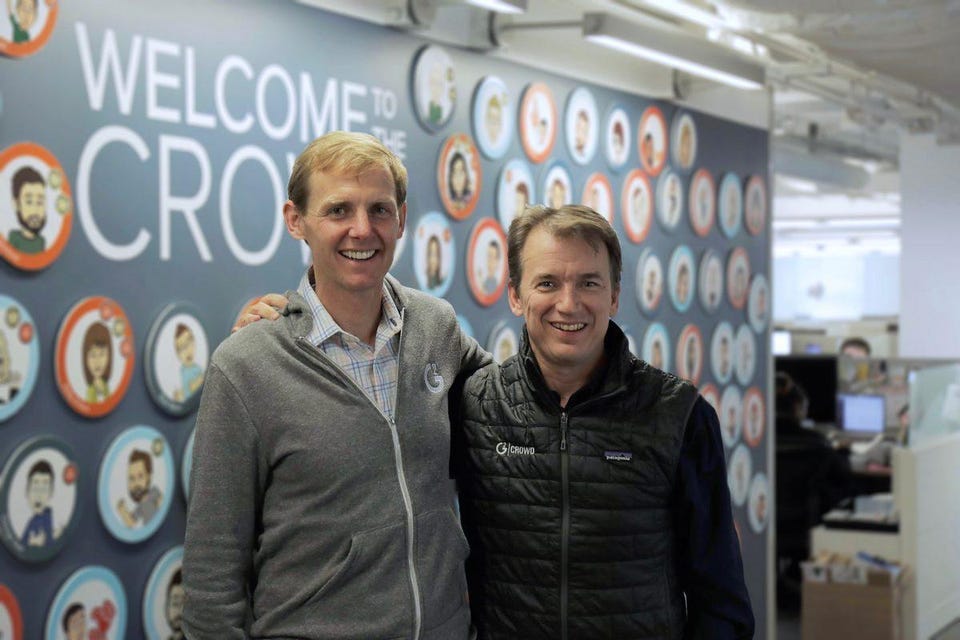How G2 crowd reached $84 million revenues?
Nailing chicken & egg problem for marketplace models.
Welcome to the 137th edition of the GrowthX Newsletter. Every Tuesday & Thursday I write a piece on startups & business growth. Today’s piece is going to 95,300+ operators & leaders from startups like Google, Stripe, Swiggy, Razorpay, CRED & more
Software review websites are raking millions & sometimes billions (wink wink Gartner). Today we are covering the story of the silent warrior in the software review category - G2 crowd (G2.com)
Quick Context 🗓
Software purchase decisions are tricky. Most businesses want to compare before they make these decisions - classic system 2 design kicking in. Which is exactly what G2 solves for. The product is simple to understand (image below).
But this model has multiple problems 😵
Why would anyone write reviews on G2? Why would anyone would trust these reviews to be authentic? Why the hell anyone pay money to read reviews. I know - you have these questions - I had them too.
Let’s address how this really works.
1/ The cold start problem.
G2 solved it by paying reviewers $10/$20/$30 per review. Yes, they paid people to write reviews. Plus, they listed the companies for free on the platform. That was the start of building critical mass. Unsurprisingly, they focused on sales and marketing first and then expanded to over 22+ major categories.
2/ The authentic reviews problem.
Even Amazon/Ebay/Flipkart struggles with it - most online reviews are fake. In mature SaaS ecosystem countries such as the EU,US the consumer is highly aware of this. They have a very low trust levels with software reviews. G2 solved the “authenticity” elegantly, by only allowing “Linkedin / work email login” for signup. Plus, it created simple algorithm to detect spam/competitors shitting on each other. And, it even created a manual QA process to tag “Validated Review” system.
3/ Getting paid from SaaS companies.
With most software becoming a commodity, brand + customer trust is paramount. G2 understood this really well. It gave companies to use G2 verified buttons on their websites.
4/ Creating a sustainable supply of reviews.
The review buttons and the category positioning forced companies to get reviews from their current customers. Companies even paid their customers through G2 to get these reviews. There are four types of reviews on G2 → Organic / incentivised by G2 / incentivised by seller/ invited by seller. This created a never ending loop. As long as SaaS has competition, G2 will have more and more traffic coming to them.
5/ The biggest money making feature - data!
G2 gives SaaS companies atleast 5 types of intent data of visitors. Who visited the category page of your SaaS product, who looked at your competitor in that category or cross category, who looked at your G2 page, who compared your product with your competitor. This helps SaaS companies do pipeline acceleration at the right moment in time, mind-blowing!
That’s all on G2 for now.
A quick peek at the founder’s masterclass 👀
We spent a whole day with 200+ founders & got them to build their 1-year revenue growth roadmap - which executable next Monday morning. Click the button below to see the whole action that happened!
Thank you for supporting this newsletter 🪄
We spend a sizable portion of our time writing pieces for this newsletter. Share it with your closed circle / Twitter if you find it interesting.













I think it would be interesting to know, at what point they were able to overcome the cold start problem. If they were paying to the the tune of double digit $ for each review, that would mean, they would have needed loads of upfront cash before there was enough critical mass of reviews to make this sustainable to bring organic traffic or a default choice for new customers to come here to know about their potential SAAS purchase. But, that would not make it a replicable model for others if they do not have same scale of venture funding upfront. Am i missing something?